Highlights
Meet a CQTian: Subash Sachidananda
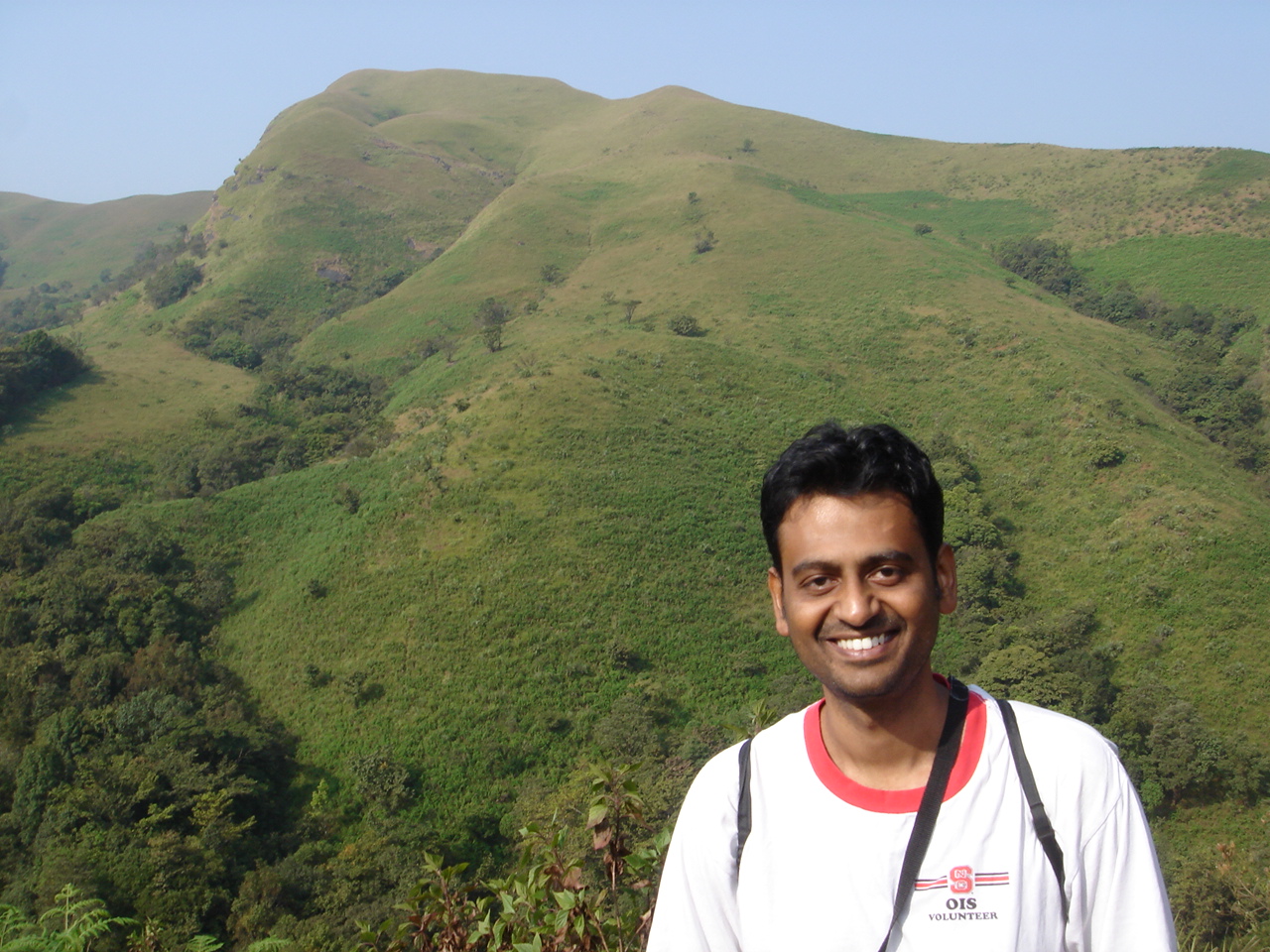
Who are you?
I am Subash, a Research Associate from Bangalore, India, working in Alexander Ling’s group. By profession, I am an electronics engineer. I help design experimental setups and electronic modules for the group to do experiments in quantum optics.
How did you come to be here at CQT?
This is my second stint in CQT. I first moved to Singapore in November 2010 after my master’s degree in the United States. My thesis advisor then referred me to this position. I was one of the first team members to join the team for the SpooQy-1 satellite mission. I stayed for about a year before going back to India. In 2018, I returned to Alex’s team and was lucky to join the end of the SpooQy-1 project.
What is it like working as an electronics engineer in quantum?
Before coming back to CQT, I did industrial automation projects where we worked with temperature sensors, constant current sources, etc. which are also used in quantum instrumentation. For example, in the air-conditioning system of a building, a sensor checks the temperature of the room and regulates the air conditioning accordingly. That is similar to what I do in quantum optics where there are some devices, like laser diodes, which need to be maintained at a certain temperature. Although the physical process for the two systems is the same, the challenge here is that you have to understand the quantum mechanics.
If the air conditioning of a room drops from 30°C to 29°C, it is still okay. But in quantum experiments, a small change in temperature will affect the whole experiment.
Is this something you’ve had to pick up?
Yes, it was a steep learning curve for me. Until I worked at CQT, I had never encountered the quantum side of things. I read a lot of papers and attended seminars. My team members are also very helpful.
What projects are especially memorable for you?
SpooQy-1 has always been special for me. There was also another project where I designed a new circuit for single-photon detection. The conventional way used a circuit board with a lot of discrete components. I proposed that we try to do it with a FPGA (field-programmable gate array) instead and developed some prototypes. It achieved the results we wanted efficiently. An important advantage was that we could easily reconfigure all the parameters using software and in real time. On the other hand, reconfiguring the conventional circuit with discrete components would be cumbersome because we would have to re-solder many components.
What are you working on right now?
I’m working in three collaborations. One is a project under the Quantum Engineering Programme with A*STAR developing single photon detectors, where we will customise detectors using FPGAs for their needs. The second is a satellite-based entanglement project which is a joint collaboration with University of Illinois Urbana-Champaign and NASA in America as well as University of Waterloo in Canada. The last is a collaboration with the Ferdinand-Braun-Institut in Germany to develop laser and temperature controllers. We are developing laser driver circuits to give very precise control over the current and temperature of the laser diode.
What is your favourite aspect of your work?
Being involved in many different projects. It is a great experience to interact with creative and smart people from all around the world and see how they think and do their research. I also like the challenge of applying my knowledge in electronics to quantum optics.
Can you share more about your artwork which you show on your Twitter channel @halfwitcreation?
A few years ago, I started doing simple drawings and cartoons to make my friends laugh. It is a fun creative outlet. For me, the main intention of my art is to bring a smile to people’s faces. I realised that one way to do that is to connect totally unrelated things to make people stop and look a little more carefully.
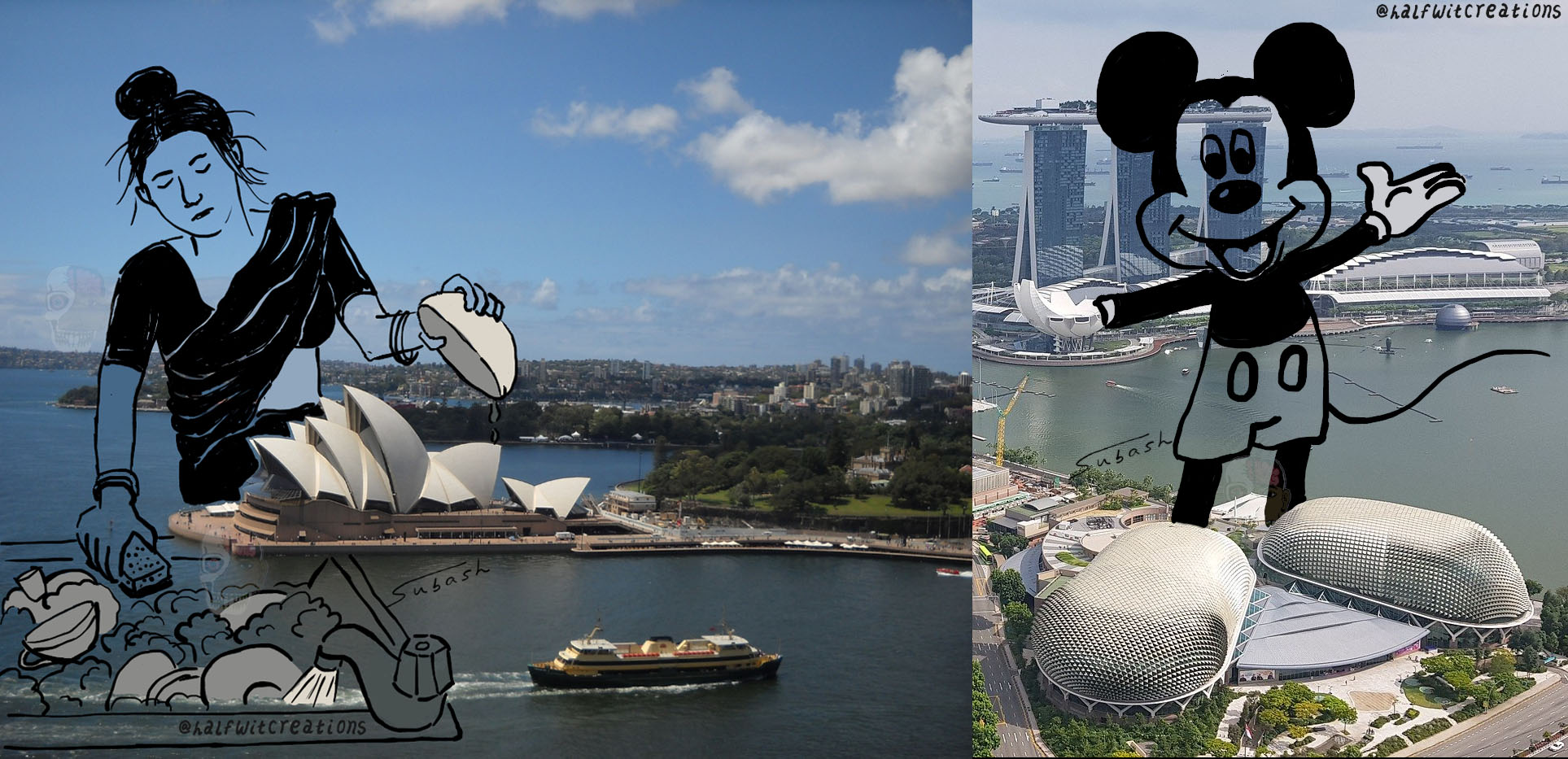 Subash’s illustrations of the Sydney Opera House and the Esplanade in Singapore. Subash hopes that his drawings bring a smile to people’s faces. Image credit: Subash Sachidananda
Subash’s illustrations of the Sydney Opera House and the Esplanade in Singapore. Subash hopes that his drawings bring a smile to people’s faces. Image credit: Subash Sachidananda
The Sydney Opera House liked your artwork too.
I was looking at a photo of the Sydney Opera House and thought that it looked like dishes. I added a lady washing the dishes, put the artwork on Twitter, and tagged the Sydney Opera House. Surprisingly they liked it and they retweeted it. They started following me too actually.
Would you like to share anything about yourself that other people might be surprised to know?
When I was in Bangalore, I used to work with a small theatre group on background music, doing small jingles, themed tracks, or title tracks for their performances.
You are about to finish your second stint at CQT. What are your plans next?
I plan to move back to Bangalore, India, next after CQT. I will mostly work in the industry and take on new domains and challenges. However, CQT will always be a special place for me and I hope I get to collaborate with CQT again in the future.
Learn more
Related Stories
 | SpooQy-1 shows promise of nanosatellites for quantum networks June 25 2020 |
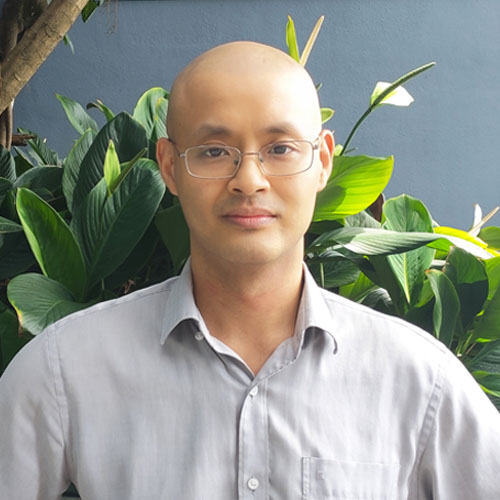 | Meet a CQTian: Yingkai Ouyang December 16 2021 |
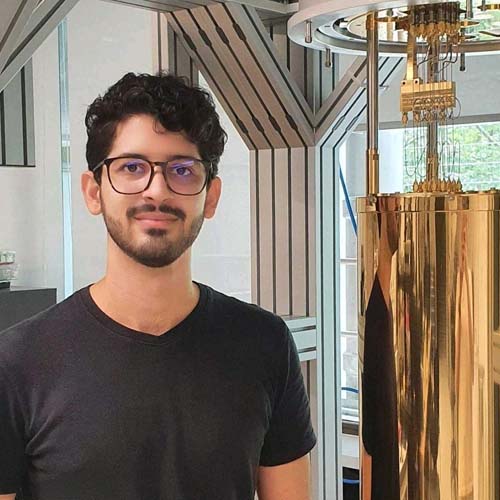 | Meet a CQTian: Fernando Valadares April 11 2022 |
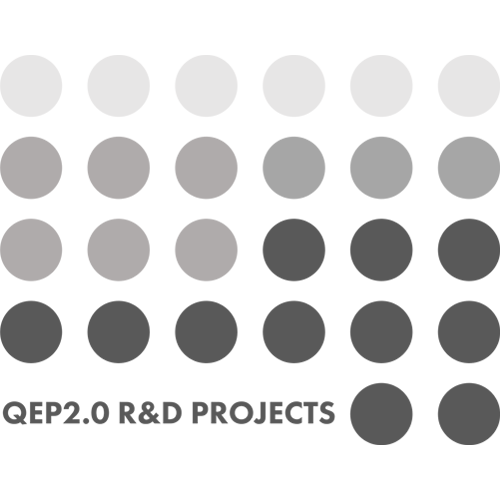 | CQT researchers awarded grants under Singapore’s Quantum Engineering Programme April 21 2022 |






